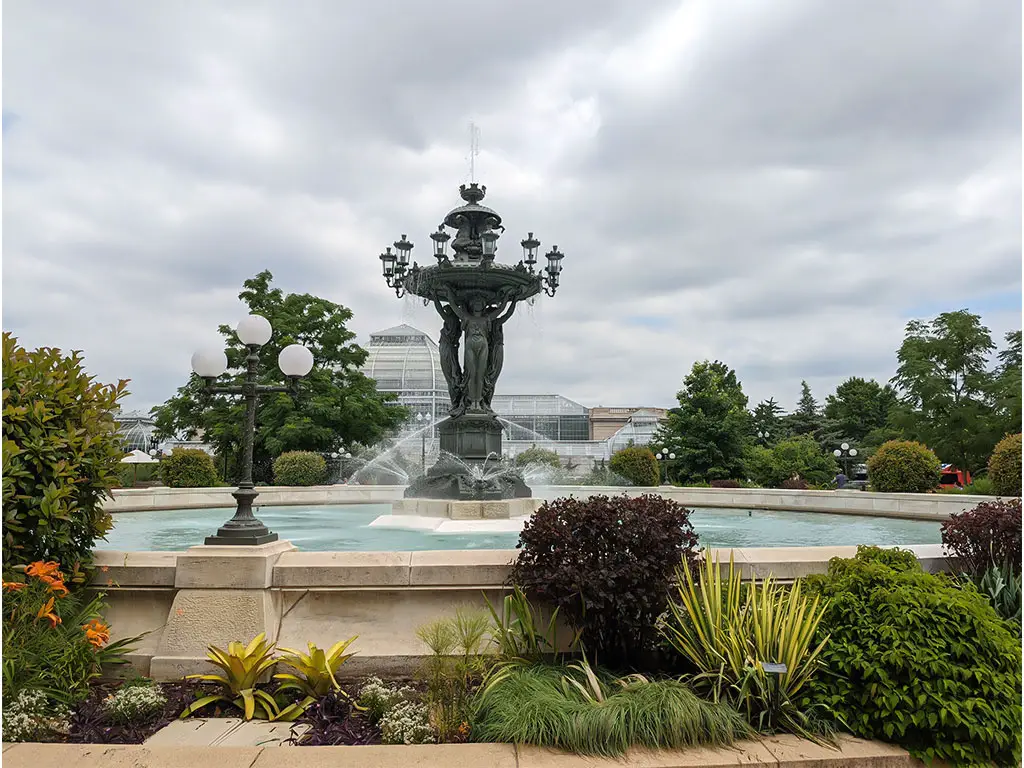Looking for the perfect family-friendly adventure in Washington, D.C.? Wondering where to take your kids for an unforgettable experience filled with learning and fun?
Look no further! In this guide, we’ll explore the best museums in Washington, D.C. that cater specifically to children.
From the wonders of natural history to the excitement of space exploration, these museums offer interactive exhibits, hands-on activities, and immersive experiences that will captivate young minds and inspire curiosity.
Whether you’re searching for dinosaur fossils, uncovering secrets as a spy, or delving into the world of words, there’s something for every young explorer to enjoy.
Get ready to embark on an educational journey that promises excitement, discovery, and unforgettable memories for the whole family. So, stay sharp.
Best Museums Washington for Kids
Discover a world of wonder and exploration in Washington, D.C.’s top museums for kids.
From the awe-inspiring exhibits of the Smithsonian National Museum of Natural History to the thrilling adventures at the International Spy Museum, each destination offers a unique educational experience that will captivate young minds and inspire lifelong curiosity.
1. Smithsonian National Museum of Natural History

Located on the National Mall, the Smithsonian National Museum of Natural History is easily accessible by public transportation, with the Federal Triangle Metro station being the closest.
Alternatively, there are numerous parking garages nearby. The museum is open every day except December 25th, from 10 AM to 5:30 PM. However, it’s best to arrive early to avoid crowds, especially during peak tourist seasons.
Upon entering, visitors are greeted by the iconic 45.5-carat Hope Diamond, a mesmerizing introduction to the museum’s vast collection.
Kids will be thrilled by the Hall of Dinosaurs, featuring towering skeletons of Tyrannosaurus Rex and Triceratops. The Butterfly Pavilion is another highlight, offering a unique opportunity to observe live butterflies and exotic insects up close.
2. Smithsonian National Air and Space Museum

Situated adjacent to the National Mall, the Smithsonian National Air and Space Museum is easily accessible by public transit, with the L’Enfant Plaza Metro station being the closest.
Like its sister museum, it’s open every day except December 25th, from 10 AM to 5:30 PM.
The museum’s vast collection includes historic aircraft, spacecraft, and artifacts related to aviation and space exploration.
Highlights include the Wright brothers’ 1903 Flyer, the Apollo 11 command module, and the Space Shuttle Discovery.
For kids, the interactive exhibits, flight simulators, and IMAX theater offer immersive experiences that bring the wonder of flight to life.
3. National Children’s Museum

Located in Downtown DC, the National Children’s Museum is easily accessible by public transportation, with the Judiciary Square Metro station nearby. The museum is open Tuesday through Sunday, from 9:30 AM to 4:30 PM.
Designed specifically for children, this museum offers hands-on exhibits and interactive activities that encourage creativity, curiosity, and learning through play.
From the “Dream Machine,” where kids can design and build their own inventions, to the “Story Mountain,” an interactive storytelling experience, there’s something to engage children of all ages.
4. Smithsonian National Museum of American History

Also situated on the National Mall, the Smithsonian National Museum of American History is easily accessible by public transit, with the Smithsonian Metro station being the closest. It’s open every day except December 25th, from 10 AM to 5:30 PM.
This museum showcases the rich tapestry of American history through artifacts ranging from the Star-Spangled Banner to Dorothy’s ruby slippers from “The Wizard of Oz.”
Kids will love exploring exhibits like “America on the Move,” which traces the history of transportation, and “Within These Walls,” which recreates life in an early American home.
5. Smithsonian Institution Building (“The Castle”)

As the headquarters of the Smithsonian Institution, “The Castle” is centrally located on the National Mall and easily accessible by public transit, with the Smithsonian Metro station nearby. It’s open every day except December 25th, from 8:30 AM to 5:30 PM.
While not a traditional museum, “The Castle” offers a fascinating glimpse into the history and mission of the Smithsonian Institution through exhibits on its founding and collections.
Kids will enjoy the interactive Discovery Room, where they can touch and explore various artifacts and specimens.
6. United States Botanic Garden

Situated near the Capitol Building, the United States Botanic Garden is easily accessible by public transit, with the Capitol South Metro station being the closest. It’s open every day, from 10 AM to 5 PM.
This living plant museum features a diverse collection of plants from around the world, housed in several themed gardens and conservatories.
Kids will delight in the Children’s Garden, where they can explore interactive exhibits on plants and ecology, as well as participate in hands-on gardening activities.
7. National Zoo (Smithsonian’s National Zoological Park)

Located in Northwest DC, the National Zoo is easily accessible by public transportation, with the Woodley Park-Zoo Metro station nearby. It’s open every day except December 25th, from 8 AM to 4 PM.
Home to over 2,000 animals representing nearly 400 species, the National Zoo offers a fun and educational experience for kids of all ages.
Highlights include the giant pandas, African elephants, and Great Ape House. Be sure to check the schedule for feeding times and special animal demonstrations.
8. Smithsonian National Postal Museum

Situated near Union Station, the Smithsonian National Postal Museum is easily accessible by public transit, with Union Station being the closest Metro stop. It’s open every day except December 25th, from 10 AM to 5:30 PM.
This museum explores the rich history and cultural significance of the United States Postal Service through exhibits on postage stamps, mail delivery, and postal technology.
Kids will enjoy interactive exhibits like the Railway Mail Car, where they can sort and deliver mail as train clerks did in the past.
9. International Spy Museum

Located in Downtown DC, the International Spy Museum is easily accessible by public transit, with the Gallery Place-Chinatown Metro station being the closest. It’s open every day, from 9 AM to 7 PM.
This museum offers a thrilling journey into the world of espionage, with exhibits on spies, gadgets, and secret missions throughout history.
Kids will love the interactive Spy School experience, where they can test their spy skills and learn about the art of espionage through hands-on activities and challenges.
10. Planet Word Museum

Situated near the National Mall, the Planet Word Museum is easily accessible by public transit, with the Federal Triangle Metro station being the closest. It’s open Wednesday through Sunday, from 10 AM to 5 PM.
This museum celebrates the power and beauty of language through interactive exhibits and immersive experiences.
Kids can explore the Word Worlds exhibit, where they can play with language and storytelling, or participate in word games and activities in the Literacy Park.
Be sure to check the schedule for special events and workshops designed for families and children.
Why Should You Take Your Kids on A Museum
Taking your kids to a museum can be an enriching and rewarding experience that goes beyond mere entertainment.
Here are six compelling reasons why exposing children to museums is not just beneficial but essential for their holistic development:
Educational Enrichment
Museums serve as living classrooms, offering hands-on learning experiences that complement formal education.
Through interactive exhibits, children can explore a wide range of subjects, from science and history to art and culture, in a dynamic and engaging way.
Whether they’re marveling at dinosaur fossils, conducting science experiments, or discovering masterpieces by renowned artists, museums provide a wealth of educational opportunities that stimulate curiosity and spark intellectual growth.
Cultural Awareness
Exposing children to different cultures and perspectives fosters empathy, understanding, and appreciation for diversity.
Museums showcase artifacts, traditions, and stories from around the world, allowing kids to immerse themselves in unfamiliar cultures and gain insight into the shared human experience.
By exploring cultural exhibits, attending multicultural events, and interacting with people from diverse backgrounds, children develop a global perspective that promotes tolerance, respect, and open-mindedness.
Stimulating Creativity
Museums inspire creativity by exposing children to a variety of artistic styles, techniques, and mediums.
Whether it’s painting, sculpture, photography, or multimedia installations, the visual and sensory experiences offered by museums ignite imagination and encourage self-expression.
Kids can draw inspiration from iconic works of art, experiment with different artistic techniques in hands-on workshops, or even create their own masterpieces inspired by museum exhibits.
By nurturing their creative instincts, museums empower children to explore their unique talents and unleash their artistic potential.
Critical Thinking Skills
Museums encourage critical thinking and problem-solving by presenting complex concepts in accessible and engaging ways.
Through observation, analysis, and interpretation, children learn to think critically about the world around them and make connections between past and present, cause and effect, and context and meaning.
Interactive exhibits challenge kids to ask questions, form hypotheses, and draw conclusions based on evidence, fostering a deeper understanding of history, science, and culture.
By honing their analytical skills, museums equip children with the tools they need to navigate an increasingly complex and interconnected world.
Social and Emotional Development
Museums provide opportunities for social interaction and emotional development in a safe and supportive environment.
Whether it’s exploring exhibits with family members, participating in guided tours with classmates, or engaging in hands-on activities with peers, children learn valuable social skills such as cooperation, communication, and teamwork.
Museums also offer a space for self-reflection and introspection, allowing kids to explore their own interests, passions, and emotions in a positive and nurturing setting.
By fostering healthy relationships and self-awareness, museums promote social and emotional well-being in children.
Memorable Experiences
Visiting a museum is more than just a day out, it’s a memorable experience that creates lasting memories and sparks a lifelong love of learning.
Whether it’s a special exhibit, a hands-on workshop, or a cultural event, museums offer unique and unforgettable experiences that captivate the imagination and inspire curiosity.
These shared experiences strengthen family bonds, foster a sense of wonder and awe, and instill a passion for exploration and discovery that extends far beyond the walls of the museum.
By making learning fun and meaningful, museums create opportunities for children to connect with the world around them and make a positive impact on their future.
Wrapping Up
The museums of Washington, D.C. offer an unparalleled opportunity for children to embark on a journey of discovery, learning, and imagination.
From the awe-inspiring exhibits of the Smithsonian National Museum of Natural History to the interactive adventures at the International Spy Museum, each destination provides a unique and enriching experience that stimulates curiosity, fosters creativity, and promotes cultural understanding.
By taking your kids to explore these museums, you’re not just giving them a fun day out, you’re opening doors to new worlds, expanding their horizons, and laying the foundation for a lifelong love of learning.
So, whether you’re marveling at dinosaur fossils, conducting science experiments, or exploring the wonders of outer space, the museums of Washington, D.C. are sure to inspire, educate, and delight children of all ages. Best wishes.




Tony Spadafora